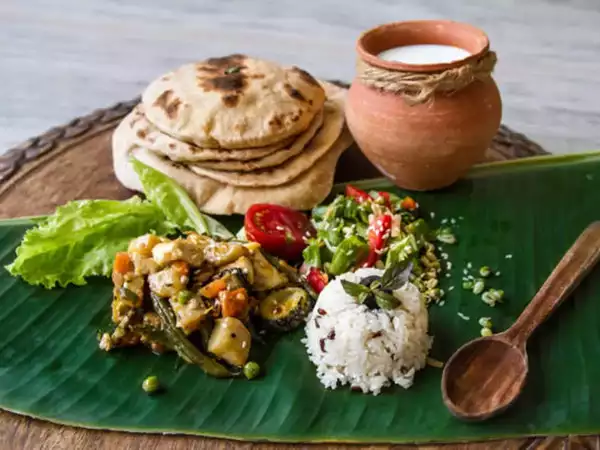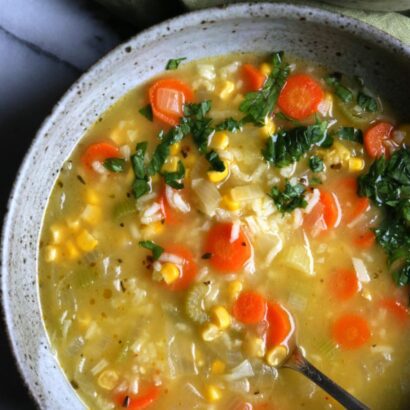The Sattvic diet, rooted in Ayurvedic philosophy, emphasizes purity, balance, and healing for both body and mind. Originating in ancient Indian practices, it’s designed to nourish and detoxify, promoting mental clarity and a calm, balanced life. The term “Sattva” means “pure essence” in Sanskrit, so a Sattvic diet consists of fresh, light, and nutritious foods thought to embody this quality. It’s commonly followed by yogis and those aiming for a peaceful, mindful, and spiritually enriching lifestyle.
What is Included in a Sattvic Diet?
A Sattvic diet focuses on whole, plant-based, and minimally processed foods. This includes:
Fresh Fruits and Vegetables: Favoring juicy, colorful, and seasonal varieties, as they are considered full of life and vitality.
Whole Grains: Such as brown rice, quinoa, and oats, providing steady energy without weighing the body down.
Nuts and Seeds: Almonds, walnuts, chia seeds, and flaxseeds offer healthy fats and protein.
Legumes and Lentils: Beans, chickpeas, and split peas are rich in protein and fiber.
Dairy (Optional): For those who consume it, milk, ghee, and yogurt are considered Sattvic if they are fresh and ideally from ethical sources.
Herbs and Mild Spices: Turmeric, ginger, basil, coriander, and cumin are used to enhance flavor while supporting digestion and detoxification.
Natural Sweeteners: Raw honey and jaggery are used sparingly, avoiding refined sugars.
The diet discourages foods that are overly spicy, processed, or stale, and it excludes alcohol, caffeine, onions, garlic, meat, and other foods believed to bring heaviness and dullness to the mind and body.
Benefits of the Sattvic Diet
Improved Digestion: Sattvic foods are naturally high in fiber and are easy to digest. The diet emphasizes proper food combining and mindful eating, which can reduce bloating, constipation, and other digestive discomforts.
Enhanced Mental Clarity and Emotional Balance: Sattvic foods are believed to have a calming effect on the mind. The absence of caffeine, processed sugars, and other stimulants helps to keep mood swings and irritability in check, promoting a calm, centered mind.
Increased Energy Levels: Because it focuses on whole foods and eliminates processed items, the Sattvic diet can help stabilize blood sugar and provide long-lasting energy without sudden crashes.
Supports Healthy Weight Management: The diet’s emphasis on fresh, nutrient-dense, low-calorie foods supports a healthy metabolism, making it beneficial for natural weight management without strict calorie counting.
Improves Skin and Hair Health: The high intake of vitamins, minerals, and antioxidants from fruits, vegetables, and healthy fats can lead to radiant skin, stronger hair, and a natural glow.
Encourages Spiritual Growth: In Ayurvedic philosophy, the Sattvic diet is not just about physical health but is also a pathway to spiritual clarity. By nourishing the body with pure foods, it’s believed to create a fertile ground for deeper meditation, self-awareness, and peace.
Nutritional Value of a Sattvic Diet
The Sattvic diet is rich in essential nutrients and vitamins that support overall health:
Vitamins and Minerals: Sattvic foods like fruits, vegetables, and whole grains provide essential vitamins (A, C, E, K, and B complex) and minerals (potassium, magnesium, calcium, and iron) that support immunity, skin health, and overall vitality.
Antioxidants: Found abundantly in fresh produce, antioxidants help reduce oxidative stress and protect the body from cellular damage, reducing the risk of chronic diseases.
High Fiber: The diet is naturally high in fiber, which is beneficial for digestive health, blood sugar management, and heart health.
Healthy Fats: Sattvic sources of fats like nuts, seeds, and ghee support brain function, hormone health, and energy levels without the downsides of processed fats.
Protein: Legumes, nuts, seeds, and dairy products (if included) offer protein, crucial for muscle repair, metabolic functions, and maintaining a balanced diet.
Tips for Transitioning to a Sattvic Diet
Start with Simple Changes: Begin by adding more fresh fruits, vegetables, and whole grains to your meals.
Reduce Processed Foods Gradually: Instead of making an abrupt switch, reduce your intake of processed snacks, refined sugars, and stimulants.
Incorporate Freshness and Seasonality: Choose local and seasonal produce to maximize the prana (life energy) in your meals.
Focus on Mindful Eating: Eat meals in a calm environment, chew thoroughly, and avoid distractions to fully absorb the nutrients.
Final Thoughts
The Sattvic diet isn’t just about food; it’s about fostering a lifestyle that promotes peace, clarity, and vitality. Following this diet can help create harmony in the body and mind, offering a well-rounded approach to health that goes beyond physical wellness. Whether adopted fully or partially, incorporating Sattvic principles can lead to lasting benefits for those seeking a natural, balanced, and spiritually mindful way of life.

Sattvic diet recipe
A sattvic diet emphasizes light, fresh, and pure foods, believed to have a calming, balancing effect on the body and mind. Here’s a simple, nourishing sattvic recipe for Vegetable Khichdi:
Sattvic Vegetable Khichdi Recipe
Ingredients:
1/2 cup basmati rice
1/4 cup split yellow moong dal (lentils)
1 medium carrot, chopped
1/2 cup green peas
1 small potato, chopped
1/2 tsp cumin seeds
1-inch piece of ginger, finely grated
1/2 tsp turmeric powder
1 tbsp ghee (clarified butter)
4 cups water
Salt to taste (optional)
Fresh coriander leaves, chopped for garnish
Instructions:
Rinse the Rice and Lentils: Wash the rice and moong dal thoroughly until the water runs clear. Drain and set aside.
Prepare the Vegetables: Finely chop the carrot, potato, and other vegetables of choice. Set them aside.
Cook the Khichdi:
In a medium saucepan, heat ghee over low heat. Add cumin seeds and grated ginger, and sauté until fragrant.
Add the chopped vegetables, rice, and dal. Stir for a couple of minutes to coat everything in the ghee and spices.
Sprinkle turmeric powder and salt (if using), then pour in the water.
Bring the mixture to a boil, then reduce the heat to low. Cover and simmer for 20–25 minutes, until the rice and dal are soft and fully cooked.
Serve: Garnish with fresh coriander leaves. Serve warm with a side of fresh yogurt or a simple salad.
Notes:
Avoid using onions, garlic, or overly spicy ingredients, as they are generally avoided in a sattvic diet.
You can add more seasonal vegetables like pumpkin, spinach, or zucchini for variety.
Enjoy your light and nourishing sattvic meal.
Other Recipes
Delicious Vegetable Soup Recipe




One Reply to “What is Sattvic Diet Recipe”